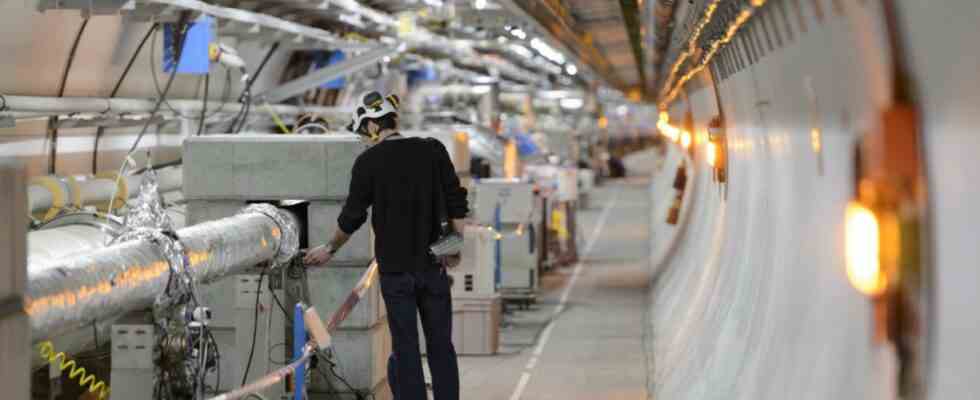The energy crisis does not stop at cutting-edge research either: On November 28, according to the European Organization for Nuclear Research, the various particle accelerators at CERN are to take a measurement break until the end of February 2023. With the advanced technology stop, the large research facility is moving its accelerator rings, which include the Large Hadron Collider (LHC), went into hibernation two weeks earlier than planned. The reason for this is the increased energy prices.
Several linear and ring accelerators (synchrotrons) are located at CERN, in which the smallest particles are accelerated to almost the speed of light with the help of magnetic coils and brought to collision. In the LHC, for example, protons race in circles, covering a distance of almost 27 kilometers in a ring tunnel near Geneva. Above all, there is the search for new physics – for knowledge that lies beyond the standard model of particle physics, after 2012 with the Higgs boson, an elementary particle, one of the last pieces of the puzzle of the standard model at the LHC proven for the first time became.
In order to generate the high magnetic fields required for particle acceleration, you need superconducting coils that are cooled to minus 270 degrees Celsius with liquid helium. In particular, this complex cryogenic technology, in addition to the operation of detectors, computers and other electrical devices, leads to hefty down payments: 1.3 terawatt hours of electricity flow during normal operation every year from the supplier EDF (Électricité de France) to CERN, which roughly corresponds to the annual electricity consumption of a 200,000 inhabitants city like the neighboring Geneva. By shutting down the accelerators early, measuring operations should be reduced by 20 percent in the coming year – and the energy saved accordingly. However, the superconductor magnets still have to be cooled, heating up the sensitive coils can damage them.
The German Electron Synchrotron (DESY) would like to counter the high electricity prices without a shutdown, but with savings beyond the accelerator operation. The research center with two locations in Hamburg and Zeuthen, which buys its electricity in tranches three years in advance in order to be prepared for sudden price fluctuations, has already covered 80 percent of its requirements for 2023. However, it remains to be seen whether DESY will be able to afford the remaining 20 percent for the coming year in view of skyrocketing prices: “The budget is currently insufficient,” explains the facility’s spokesman, Thomas Zoufal. However, Federal Research Minister Stark-Watzinger has one rescue parachute set up so that energy-intensive research centers “are not left out in the cold”, according to Zoufal. One now hopes for these funds.
The “highlight projects” being researched at DESY include technological solutions to mitigate climate change, such as novel battery concepts or flexible solar cells. On PETRA III (Positron-Electron Tandem Ring Accelerator) alone, a storage ring that serves as a source of high-energy synchrotron radiation, 3,000 guest scientists conduct their experiments every year. “We tried running PETRA in a different mode, but we couldn’t really save energy that way,” says the spokesman. Therefore, one wants to try to run through during the winter months, also with regard to the measurement time coveted by scientists. Zoufal: “Careers depend on it.”

